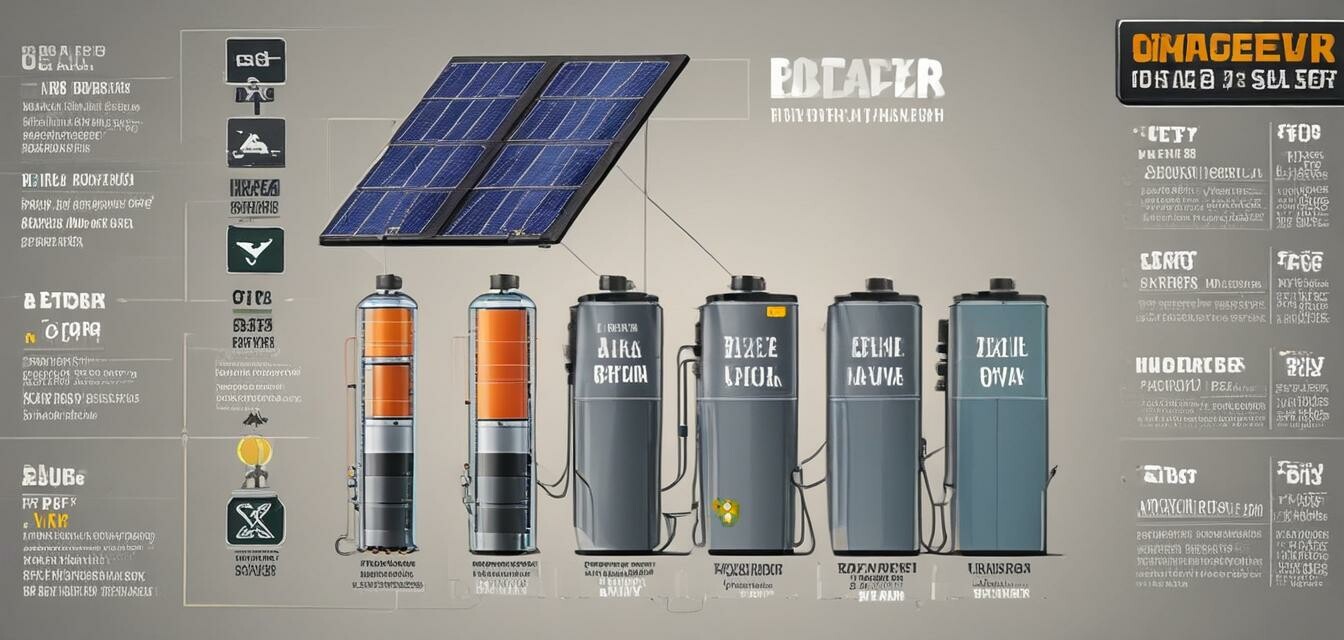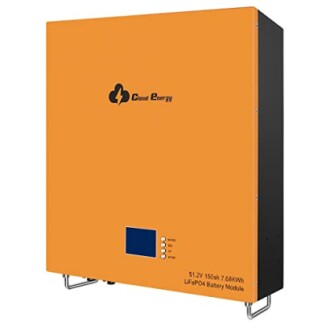
How to Select the Right Battery Capacity for Off-Grid Systems
Key Takeaways
- Determine your energy needs based on usage patterns.
- Consider battery discharge depth and cycle life.
- Choose the right battery chemistry for your off-grid system.
- Calculate the required battery capacity for your specific setup.
- Individual battery specifications can greatly influence performance.
Are you thinking about going off-grid with solar energy? One of the first and most critical steps you need to take is selecting the right battery capacity for your solar system. This decision is vital as it directly impacts your energy independence and the efficiency of your entire setup. In this guide, we will walk you through the key factors to consider when choosing the ideal battery capacity for your off-grid solar system.
Understanding Battery Capacity
Battery capacity is often measured in amp-hours (Ah). This is a crucial metric that tells you how much energy the battery can store and deliver over time. For example, a 100Ah battery can theoretically supply 100 amps for 1 hour, or 50 amps for 2 hours, or even 25 amps for 4 hours.
Factors to Consider When Selecting Battery Capacity
1. Determine Your Energy Needs
The first step in selecting the right battery capacity is to assess your energy requirements. This involves calculating your daily energy consumption in watt-hours (Wh). Follow these steps:
- List all appliances and devices you will be using.
- Identify the wattage of each device.
- Estimate how many hours each device will be used daily.
- Multiply the wattage by the hours used to find the daily consumption for each device.
Example Calculation:
| Device | Wattage | Hours Used | Daily Consumption (Wh) |
|---|---|---|---|
| Refrigerator | 150W | 24 | 3600 |
| LED Lights | 10W | 5 | 50 |
| Laptop | 60W | 4 | 240 |
| Fan | 50W | 6 | 300 |
| Total | 4090 Wh |
In this example, the total daily consumption is 4090 Wh. To ensure you have enough energy stored, you’ll want to consider a battery capable of storing this amount.
2. Calculate Required Battery Capacity
Next, to convert watt-hours to amp-hours (the unit in which battery capacities are usually expressed), use the following formula:
Battery Capacity (Ah) = Daily Consumption (Wh) / Battery Voltage (V)
For this example, if you use a 48V battery system:
Capacity = 4090 Wh / 48 V = 85.21 Ah
3. Selecting Battery Type
The type of battery you choose can affect the overall capacity and longevity. Here are common types of batteries used in off-grid systems:
- Lead-Acid Batteries: Economical but shorter lifespan and deeper discharge limits.
- LiFePO4 Batteries: Higher cost but longer life cycles and support deeper discharges.
- AGM Batteries: Sealed and maintenance-free with good life spans and deep cycle performance.
48V 150Ah Wall Mounted Lithium LiFePO4 Deep Cycle Battery
This battery offers over 6000 life cycles, ideal for a variety of off-grid applications like RV and solar installations.
Learn More4. Consider Depth of Discharge
Depth of Discharge (DoD) refers to the percentage of battery capacity that has been used. Batteries can be depleted to different depths, depending on the chemistry:
- Lead-Acid: Typically recommended at 50% DoD.
- LiFePO4: Can be safely discharged up to 80-90% DoD.
5. Evaluate Cycle Life
The cycle life of a battery is crucial for long-term use. It refers to how many complete discharge and recharge cycles a battery can perform before its capacity drops to a specified percentage (usually 80% of the original capacity). LiFePO4 batteries, for example, can last up to 6000 cycles, while lead-acid batteries may last only 300 to 600 cycles.
Pros
- Allows for independence from the grid.
- Eco-friendly and sustainable energy source.
- Cost savings on electricity over time.
- Versatile battery options available.
Cons
- Initial investment can be high.
- Requires maintenance and monitoring.
- Diminished performance in extreme temperatures.
Additional Considerations
Alongside battery capacity, consider other components of your off-grid setup:
- Solar Panels: Must match the battery capacity to ensure adequate charging.
- Charge Controllers: Protect battery systems and optimize charging.
- Inverters: Convert DC to AC power for home use, like the AIMS Power 6000 Watt Pure Sine Inverter Charger.
AIMS Power 6000 Watt Pure Sine Inverter Charger
Ideal for large applications with auto transfer switch capability. Supports multiple battery technologies.
Explore NowConclusion
Choosing the right battery capacity for your off-grid system is a crucial step towards achieving energy independence. By considering your energy needs, the type of battery, DoD, cycle life, and additional components, you can make an informed decision that fits your lifestyle. Invest wisely, and you'll enjoy the off-grid living experience to its fullest.
Learn More
If you want to dive deeper into off-grid systems, check out our other resources:





